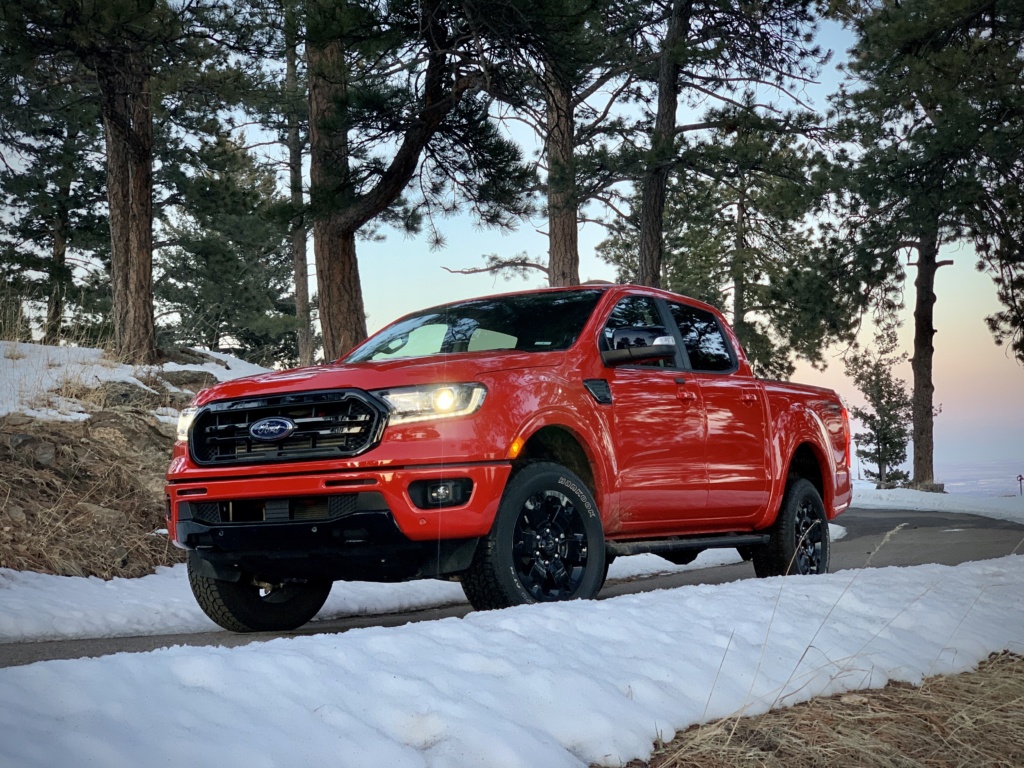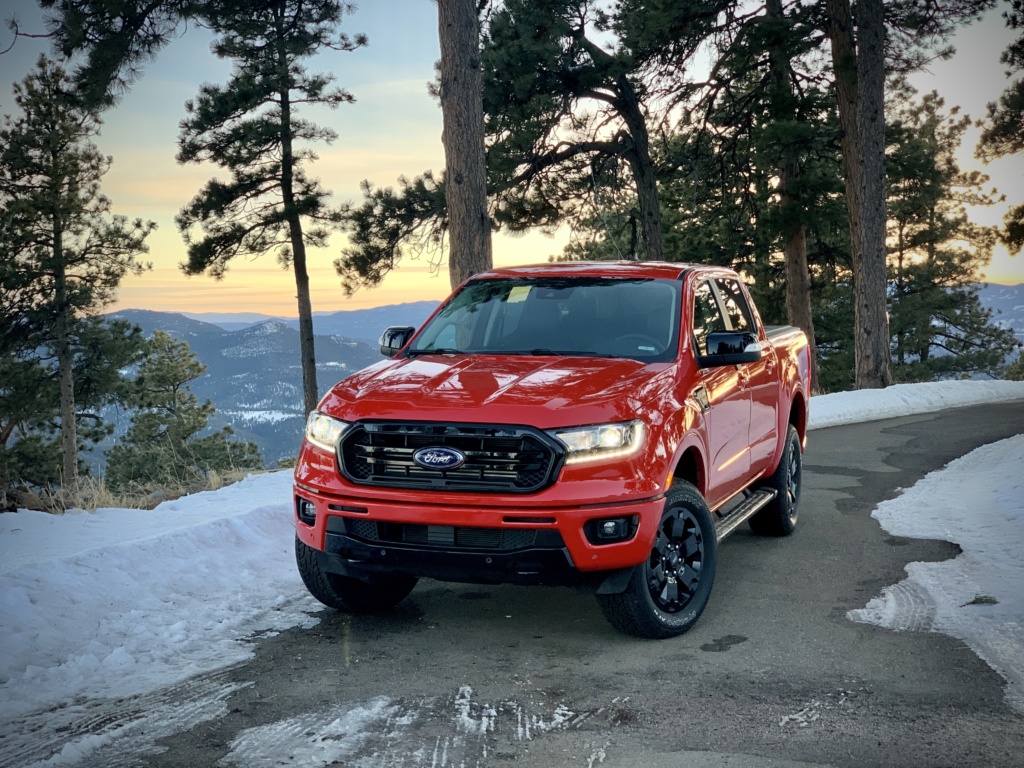
Right off the bat, let’s note that this is a very different truck than what Ford last sold as a Ranger in 2011. That specific design had become very familiar because it went unchanged in the U.S. for most of the ’90s and 2000s. Taking a look at this 2020 Ranger, it couldn’t be much more different. From its swept-back windshield and high shoulders to the efficient and powerful powertrain, the latest Ranger represents today’s world view of what a mid-size pickup should be, but does that work for America?
Long before the Ranger eventually left the market in 2011, Ford had diverted much of its local engineering resources to the more profitable full-size truck programs. However, the rest of the world’s regions still presented a need for mid-size pickups and Ford continued to advance the design of the Ranger to those markets’ preferences.
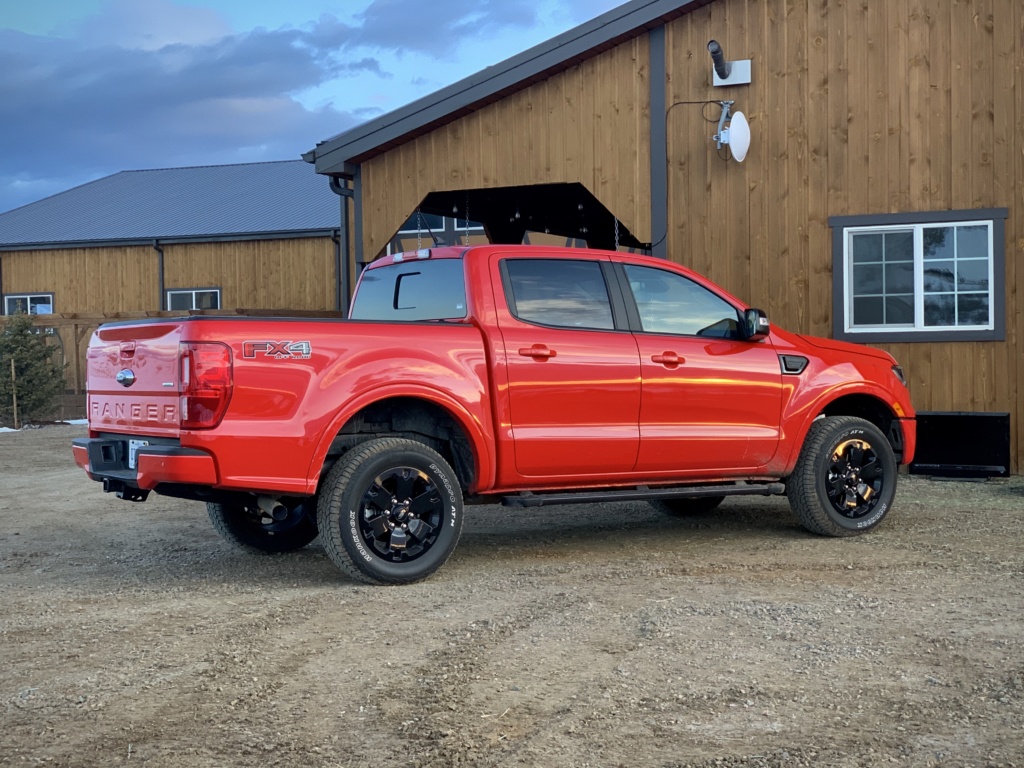
The U.S. market has since evolved and strong mid-size truck sales convinced Ford to reenter the Ranger and do it quickly by using an adapted design from Australia. The new Ranger is more capable and luxurious than ever before though its unfamiliarity and several design peculiarities make it difficult to warm up to.
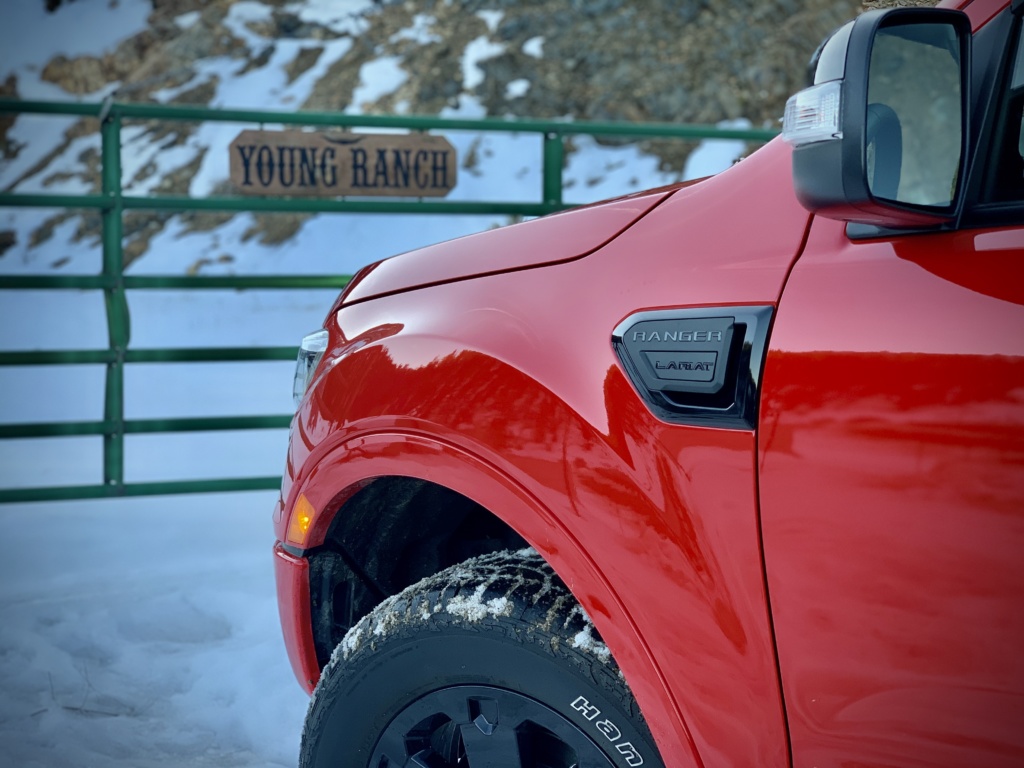
This is the top of the line Lariat trim and it includes about every option reasonably expected from a rough and tumble mid-size truck. At $47k, the Ranger feels a bit pricey considering the Tacoma is less costly and has better interior material quality and control layout. The seat leather has a plasticky feel and the steering wheel’s stitching is rough and significantly protrudes from the leather surface.
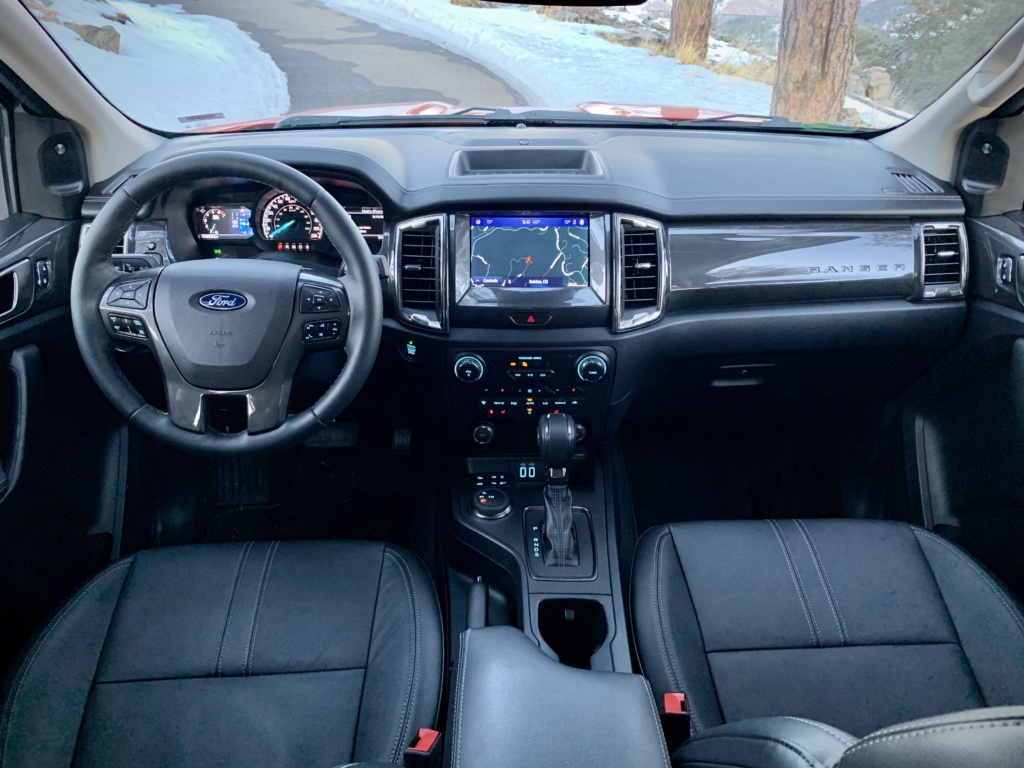
The instrument panel features several gray painted large pieces that are appealing from a distance though their orange-peel is impossible to forget once it’s been seen. There are other design quibbles such as the HVAC and seat heater buttons that are positioned low and are indiscernible by touch and the steering wheel controls which are awkwardly positioned for operating without a weird wrist stretch of taking a hand off of the wheel. Digital information displays sit at either side of the speedometer and feature logically arranged menus though the screen resolution is low and the images can become crowded. Sitting at the center of the instrument panel is a square-ish eight-inch touchscreen with all of today’s expected connectivity including navigation. It worked well – only temporarily freezing once – but the menu system requires some familiarity before being able to quickly punch from one menu to another.
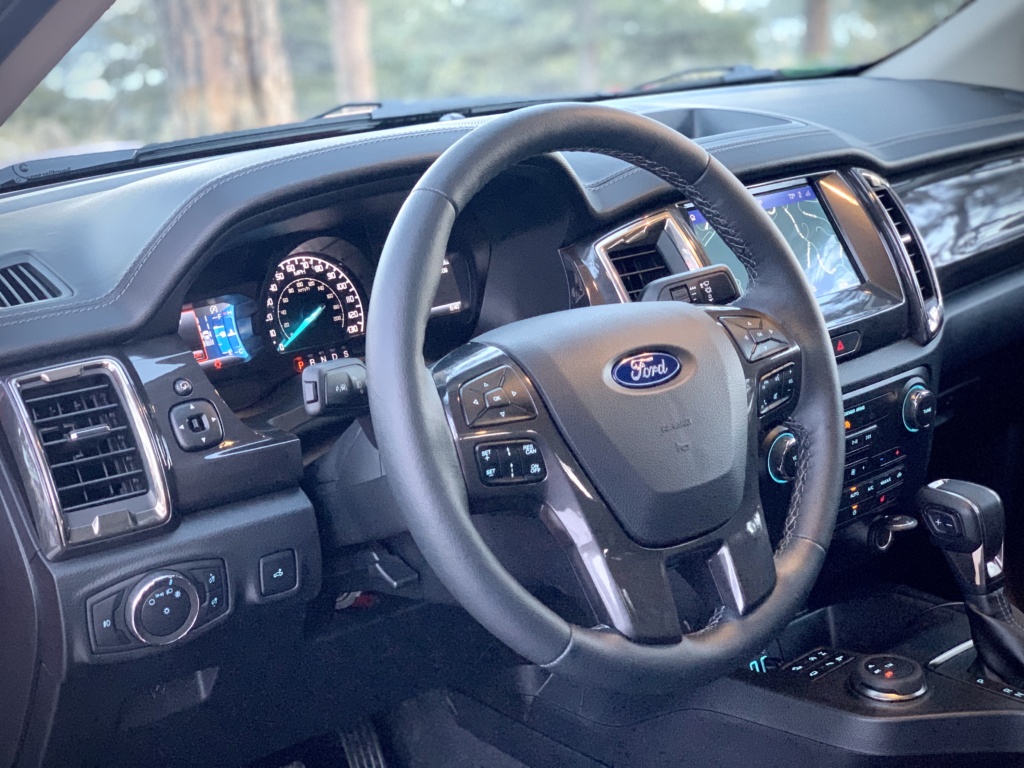
The Bang & Olufsen 10-speaker 675-watt sound system lacks the premium levels of clarity though it certainly has the power to get the road trip party bumping.
Speaking of road-tripping, the front passengers enjoy good shoulder room though the rear-seat legroom is tight for people greater than 6 feet tall and the seatback is too steeply angled to be comfortable on long rides.
Powertrain
The engine and transmission are part of the Ranger’s radical shift from what’s been offered in the past, and even to what is offered in the U.S. market currently. First off, there is no V6 available. In fact, the only engine is a 2.3-liter turbocharged four-cylinder that generates 270 horsepower and 310 lb-ft of torque. And secondly, the only transmission available is a 10-speed automatic transmission. Thankfully, they are a great pair. The engine requires just a brief moment to get on full broil and the wave of torque, as well as its excellent throttle control, are confidence-inspiring. The engine isn’t just great at providing effortless acceleration at any speed, as it also sounds good doing so.

The transmission’s skills didn’t go unnoticed either. Despite having ten forward speeds, it never second-guessed itself about which gear to pull from and the engineers did an excellent job choosing with selecting those ratios. Case in point, the transmission will skip second gear when casually accelerating from a stop to provide a smoother launch while the third gear ratio allows the engine to continue to pull steadily instead of being bogged down. Heavier throttle inputs will make full use of the second gear while relaxed highway driving will see lots of 10th gear use. Kickdowns come as expected though the engine’s significant low-end power usually negates most needs for dropping more than one gear.
Together, the duo helps the Ranger earn just over 21 mpg which I feel is an impressive figure considering a significant amount of time was spent blasting up mountain highways and exploring the engine’s sizable yet easily-manipulated amount of torque around town.
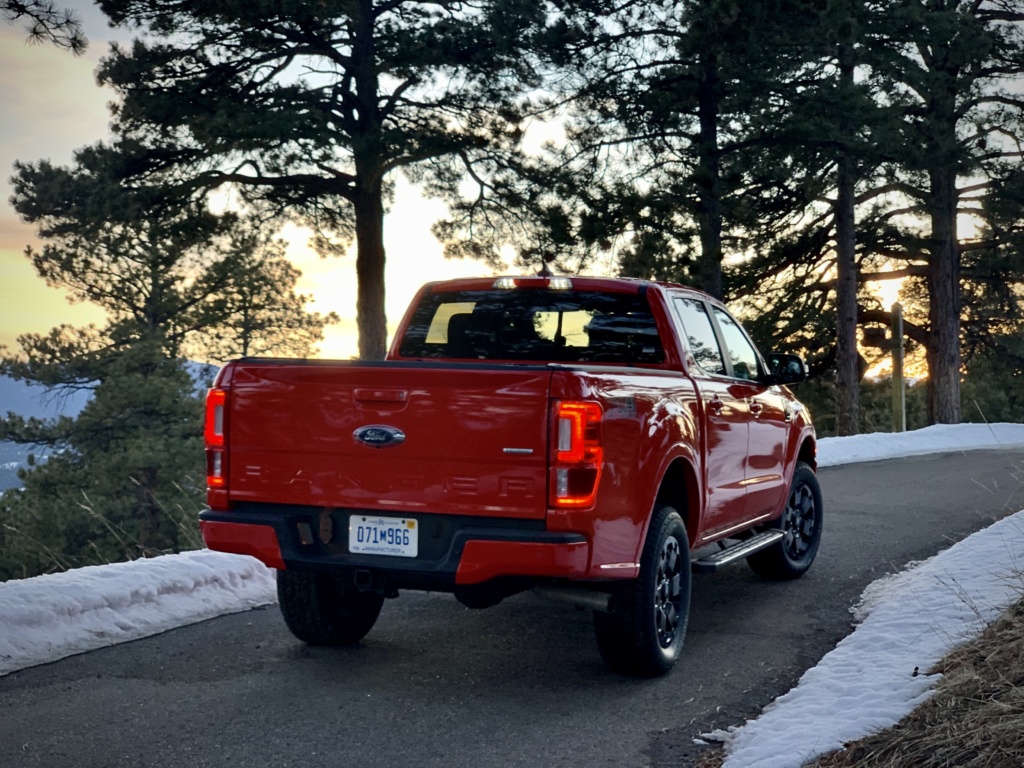
The Ranger’s $1,295 FX4 Off-Road Package feels worth the cost with its electronic rear locking differential, crawl control, hill descent control, different terrain management settings, and retuned shocks, though the cluster of tiny buttons for these systems feels somewhat anticlimactic. The Ranger’s part-time four-wheel-drive system is ideal for off-road duty, however, its lack of on-demand activation is a notable deficiency for mixed weather driving where the lightweight rear end’s grip is no match for patches of slush and snow in 2WD mode while 4WD is not to be used on grippy surfaces.
Ride, Handling, Capability.
The body’s high floor provides extra off-road clearance and the high seating position provides a view above most other cars, however, the body’s susceptibility to rocking back and forth just by moving around inside isn’t a very confidence-inspiring memory to think of when encountering high crosswind speeds at highway speeds.
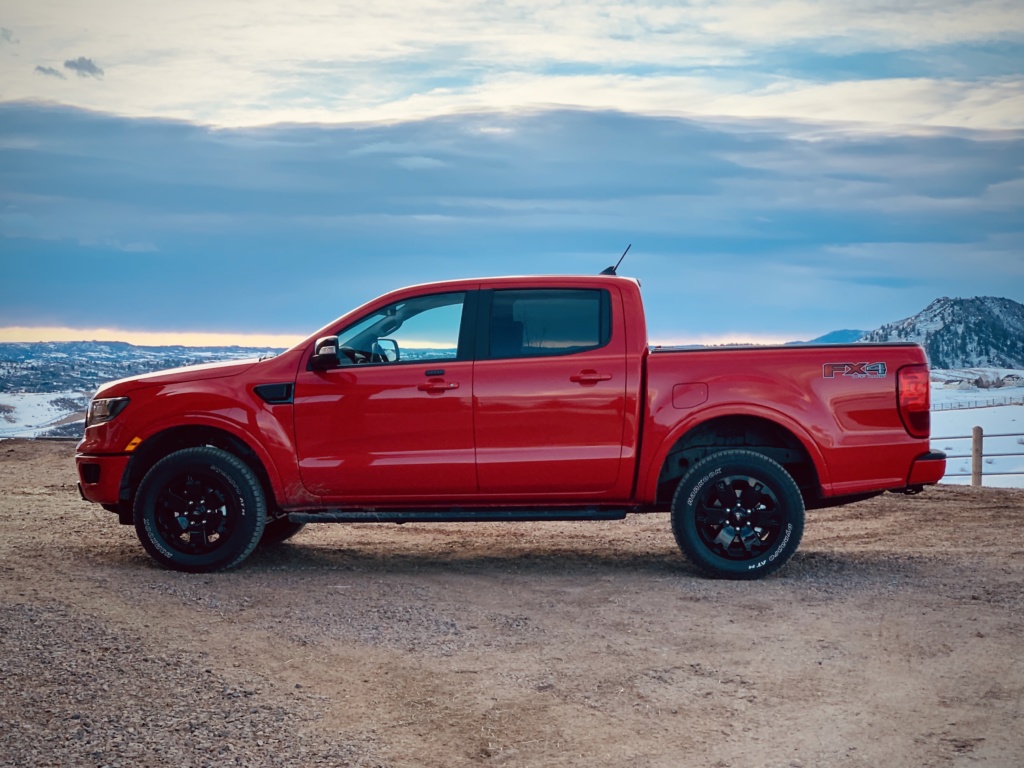
Around the winding roads, the truck settles in nicely but toss in a mid-corner bump and the truck becomes unsettled and it takes a few moments before it regains its composure. The Ranger excels at shrugging off sharp impacts, although moderate bumps will send a quiver or secondary shake that’s heard through the cabin.
Part of the focus of the local Ford team involved improving the truck’s overall capability. Payload capacity is up as is towing – in fact, the Ranger is listed as being able to tow 7,500 lbs which is quite impressive though considering its vague-feeling brake pedal and rock-about body, I don’t think I could ever feel at ease while towing near its maximum rating.
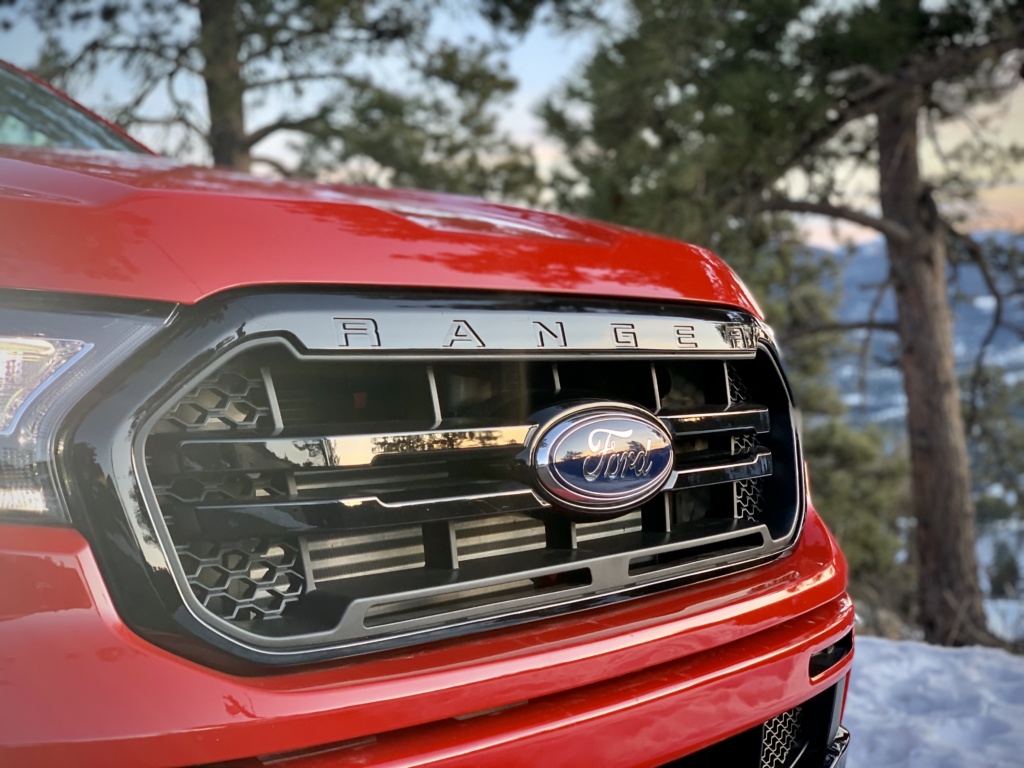
So where does that leave this, entirely direction for the Ranger?
Since the last days of the previous generation Ranger, the mid-size truck market has become much more focused on the outdoorsy-type retail customer than before. With that in mind, Ford delivers on the ruggedness front, though it needs a bit more interior refinement to be the best in the segment.
